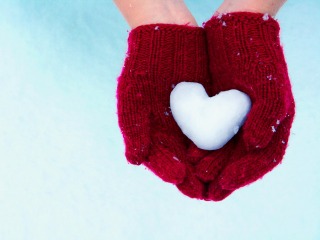We're just ordinary people.
Thirty, or so, of us, in New Caledonia for three weeks. As an ordinary man, I was scarred by the coral when I dived in to see it and the fish that swam around there. I had never had flippers on my foot nor really worn a mask with a tube. But the ability to see below the surface clearly was a great experience. This was at Ile aux Canards, a boat-taxi ride away from Anse Vata in Nouméa. This was the postcard image I'd seen on the internet. Who would have known that below the surface there would be such a rich world of fish, of many colors, shapes, and sizes. Beautiful. We were told before diving not to step on the coral because we could damage it, and I thought that would have been easy but it was not, because I didn't follow the marked path and I tripped several times over coral and othertimes grazed my knees on it, leaving me with scars. Who knew coral could injure. But they are scars I bear as a thank you, a reminder that I was there and that I did inflict some damage upon nature (and it saw fit to do the same unto me).
We had seven days of straight sunshine that first week. Then a spittle of rain and more sunshine, but later on I recall some of the girls dancing with their iPods in their ears outside the stairs of Bâtiment A (at the Residences) one evening when it did rain well. It was a welcome rain. Soaking, not very cold but just right to cool us off during the final, exam-packed week. One effect of the rain is that it would reduce the amount of dust that was in the air near the construction sites. The University of New Caledonia was having a new office block being built past the cafeteria in the shape of an accordion. Many times when we walked past the site, the men at work would call out to the girls I'd be walking with and say "Bonjour!" or "Je te verrai plus tard!" (paraphrase). And sometimes these men would be up working in the building itself or in one of the vehicles/excavators, one of which we affectionately named T320C after the number on its side. Sif we knew that one. Often, in the sunshine, dust would rise from the area, not enough that you couldn't see, but enough that you would avoid it or hold your breath had you had to pass through.
Nouméa hosts its slew of palm trees. Apparently New Zealand is the furthest south that palm trees actually grow, so I was not surprised to see them here. The whole country is rich in vegetation that is specific to this place, it being a unique reservoir of nickel, and a number of other superlatives. With this much natural resource though, it was strange seeing a planted forest while on the bus on our way south to the Parc de la Rivière Bleue. After getting used to the idea of trees growing in accordance with nature's way, it was a bizarre sight to notice the human touch of a grid of planted trees, for maybe 100m, where there was a space of a metre between each tree.
Back in the capital, which looks pretty run down by comparison to, say, Auckland, buses, also in comparison to Auckland, run smoothly. There is much graffiti in places, yet somehow it seems to be part of the culture here and doesn't look that bad. Apparently some graffiti is done in corrector fluid though. Make do with what you got? The people are generally very nice. They say Bonjour, we say Bonjour. Maybe it is because we are foreigners and pretty visibly so - if not from the way we look, from the way we talk, with our foreign French accents and the fact that we blow air when we pronounce our consonants.
Speaking of demographics, there seems to be a rich-poor gap here as well. There are the rich suburbs, such as Port-de-Plaisance which hosts some beautiful, panoramic villas, then there are the poorer ones, like Nouville, where the university is located. The houses there were much simpler, and I imagine had more people living in them. Near those houses, in the forests or along trails in the bush, it was common to come across rubbish dumps in which washing machines and other appliances were rusting away with other metals and ordures. This added to the character of the place, I feel. The Kanaks here, the indigenous, seem to also have been greatly influenced by Bob Marley and Che Guevara, icons whose faces appear on paraphernalia and miscellaneous knick-knacks. Oppressed peoples. Suggestions of the struggles they have been through, struggles which we, as foreigners, learned through lectures and Wikipedia, though struggles which they have had to live as heirs of. There are paradoxes visible too. For example, there are many 'more expensive' European cars, Dacias or Peugeots, that drive on the roads. Correlation? Qui sait?
It is a fortunate though rare experience to be given access to a world different from my own. Of course, my perception is influenced by that, so I don't know if what I saw and felt was the truth. But it was the truth for me.
Tell you what though, the experience has brought its slew of memories. Some that I cannot even express because they were not transmitted via language. Keepers. Ones to remember, maybe not consciously, but keep regardless, like imprinted inklings on an already-coloured canvas.
Like the pier.
And the moon.
And the air.
And just being there.
And more plays…
1 year ago


0 comments:
Post a Comment